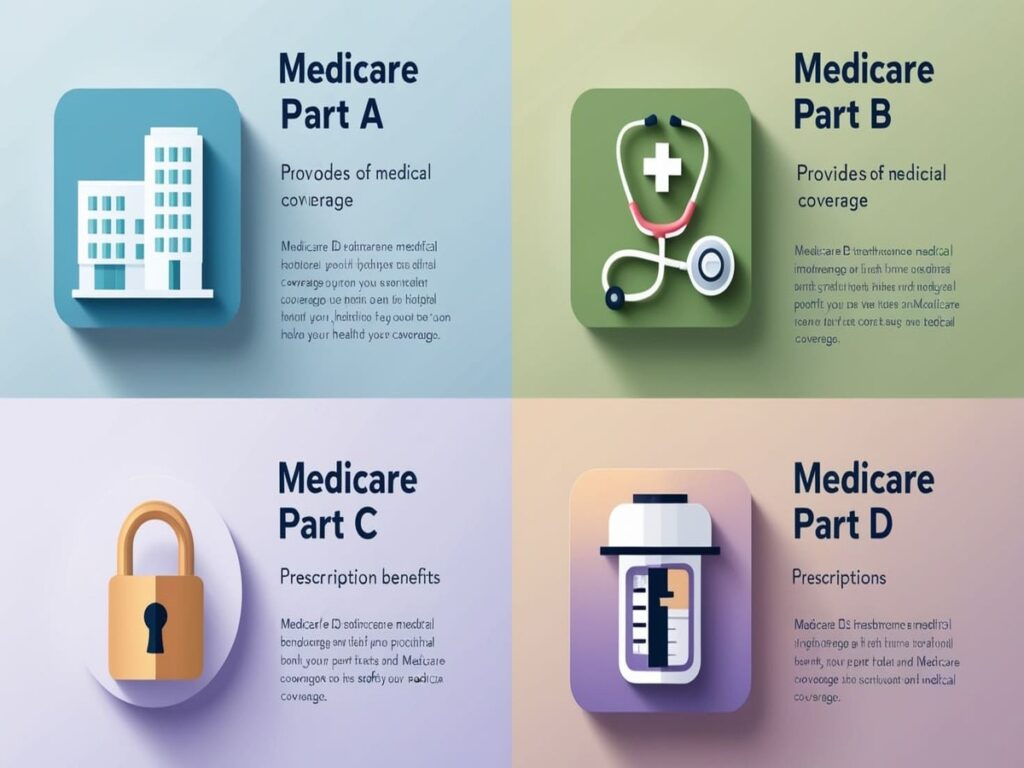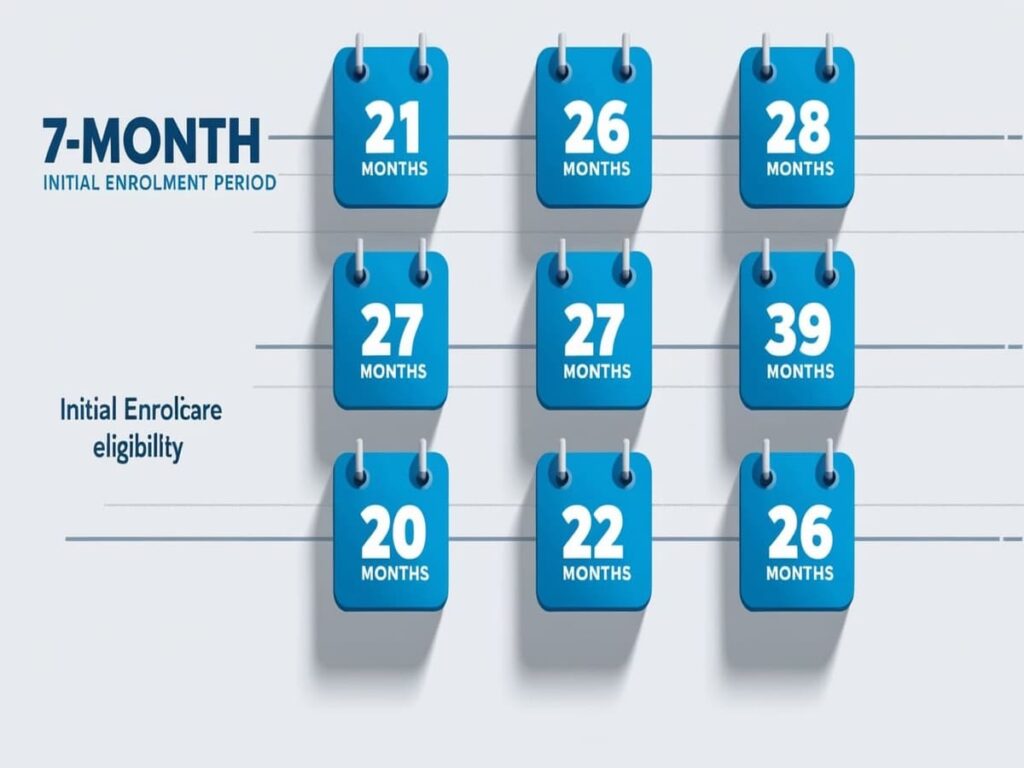What is Medicare?
Let’s face it—navigating the healthcare system can feel like deciphering a foreign language. And when it comes to Medicare, the U.S. government’s health insurance program, it’s no different. Originally signed into law in 1965, Medicare is a federal program primarily designed for people aged 65 and older, though younger individuals with certain disabilities or end-stage renal disease (ESRD) can also qualify. Think of it as a safety net—there to help cover essential medical costs when you need them most.
Medicare is administered by the Centers for Medicare & Medicaid Services (CMS) and funded through payroll taxes, premiums, and the federal budget. Despite its age, Medicare has evolved to meet the needs of today’s healthcare challenges. It isn’t a one-size-fits-all plan. In fact, it’s split into several parts, each covering different services and charging different costs. Understanding these components—particularly Part A and Part B—is critical to making informed decisions about your healthcare coverage.
The Four Parts of Medicare at a Glance
Before we dive deep into Part A and B, let’s get a snapshot of all four parts of Medicare:
- Part A (Hospital Insurance): Covers inpatient hospital stays, care in a skilled nursing facility, hospice care, and some home health care.
- Part B (Medical Insurance): Helps pay for services from doctors and other health care providers, outpatient care, home health care, durable medical equipment, and some preventive services.
- Part C (Medicare Advantage): An alternative to Original Medicare offered by private insurance companies that bundle Part A, Part B, and often Part D.
- Part D (Prescription Drug Coverage): Helps cover the cost of prescription drugs.
Together, these parts aim to form a comprehensive health safety net, but most people start with understanding Parts A and B—often referred to as “Original Medicare.”

What is Medicare Part A?
Overview of Medicare Part A
Medicare Part A, also known as “hospital insurance,” is the backbone of Original Medicare. It focuses on inpatient care—the kind you receive when you’re admitted to a hospital. When people talk about Medicare helping with serious health events like surgeries or extended hospital stays, they’re referring to Part A.
Here’s the kicker: For most people, Part A comes at no monthly premium. That’s because if you or your spouse worked and paid Medicare taxes for at least 10 years (40 quarters), you’ve already earned it. Think of it as a reward for all those years of hard work and taxpaying.
But while the premium may be free, that doesn’t mean there are no costs involved. There are deductibles, copayments, and limitations on how many days are covered—something we’ll break down more clearly in the sections ahead.
What Services Does Part A Cover?
Part A covers four main types of services:
Inpatient Hospital Care
If you’ve ever had to stay overnight in a hospital, you’ll appreciate the importance of Part A. This includes:
- Semi-private room and board
- Nursing services
- Meals
- Drugs as part of your inpatient treatment
- Lab tests, surgery, and other procedures during the stay
The coverage starts after you pay a deductible. As of 2025, the Part A deductible is over $1,600 per benefit period. After that, Medicare covers a specific number of days in full or partially.

Skilled Nursing Facility (SNF) Care
Let’s say you’ve been discharged from the hospital but still need rehab or round-the-clock care. That’s where SNF care steps in:
- Must follow a qualifying hospital stay of at least three days
- Covers room and board, physical therapy, medications, and more
- Limited to 100 days per benefit period, with the first 20 days fully covered
Hospice Care
Hospice care is for terminally ill patients who choose comfort care over curative treatments. Part A covers:
- Pain relief
- Symptom management
- Support services for both patient and family
- Provided at home or in a hospice facility
Home Health Services
Under Part A, you may qualify for limited home health care if you’re homebound and need skilled services. This includes:
- Part-time or intermittent nursing care
- Physical, occupational, or speech-language therapy
- Medical social services
Eligibility for Medicare Part A
Eligibility is pretty straightforward. You qualify if:
- You’re 65 or older and a U.S. citizen or permanent legal resident
- You or your spouse worked for at least 10 years in Medicare-covered employment
- You receive retirement benefits from Social Security or the Railroad Retirement Board
- You’re under 65 but have certain disabilities or conditions like ESRD
Cost Structure of Medicare Part A
Even if premiums are zero, you still have costs to consider:
| Service | Your Cost (2025 Estimates) |
|---|---|
| Deductible (per benefit period) | ~$1,600 |
| Days 1–60 in hospital | $0 |
| Days 61–90 | ~$400 per day |
| Days 91+ (Lifetime reserve days) | ~$800 per day |
| Beyond lifetime days | All costs |
| Skilled Nursing (Days 1–20) | $0 |
| Skilled Nursing (Days 21–100) | ~$200 per day |
What is Medicare Part B?
Overview of Medicare Part B
Part B picks up where Part A leaves off. While Part A handles the hospital side of things, Medicare Part B covers medical services and outpatient care. That means doctor’s visits, lab tests, preventative services, mental health care, and even some home health services fall under this umbrella.
Unlike Part A, Part B typically requires a monthly premium. In 2025, the standard premium is projected to hover around $175, but it can be higher based on your income. The trade-off? Comprehensive outpatient coverage and access to services that help you stay healthy—not just treat you when you’re sick.
What Services Does Part B Cover?
Doctor Visits
From your general practitioner to specialists, Part B helps cover visits, consultations, and follow-ups. This includes:
- Office visits
- Diagnostic services
- X-rays and imaging
- Minor outpatient surgeries

Outpatient Services
This includes a wide range of services you don’t need to be hospitalized for:
- Emergency room visits (if not admitted)
- Physical therapy
- Chemotherapy and radiation
- Ambulance services
Preventive Services
Medicare Part B goes all-in on prevention, offering many services at no cost to you:
- Annual wellness visits
- Flu and pneumonia vaccines
- Cancer screenings (mammograms, colonoscopies, etc.)
- Cardiovascular disease screenings
Durable Medical Equipment (DME)
When you need gear to help with daily living or recovery, Part B is your friend. It covers:
- Wheelchairs
- Walkers
- Hospital beds
- Oxygen equipment
Eligibility for Medicare Part B
Eligibility for Medicare Part B generally mirrors that of Part A, but there are some additional considerations. Here’s a quick rundown of who qualifies:
- Age 65 or older and a U.S. citizen or lawful permanent resident with at least five continuous years of residence.
- Individuals under 65 may qualify if they’ve been entitled to Social Security Disability Insurance (SSDI) for at least 24 months.
- Those diagnosed with End-Stage Renal Disease (ESRD) or Amyotrophic Lateral Sclerosis (ALS) (also known as Lou Gehrig’s disease) are eligible without the 24-month waiting period.

You don’t automatically get Part B unless you’re already receiving Social Security benefits at age 65. In that case, you’ll be automatically enrolled. Otherwise, you’ll need to sign up during your Initial Enrollment Period (IEP).
Cost Structure of Medicare Part B
Unlike Part A, Medicare Part B has a monthly premium that most beneficiaries are required to pay. In 2025, the standard premium is projected to be around $175 per month, but can go higher for those with higher incomes due to Income-Related Monthly Adjustment Amounts (IRMAA).
Here’s a breakdown of costs associated with Part B:
- Monthly Premium: Starts at ~$175 (varies with income)
- Annual Deductible: Approximately $240
- Coinsurance: After the deductible, Medicare generally pays 80% of the Medicare-approved amount for covered services, and you’re responsible for the remaining 20%.
Here’s a simple table to visualize the Part B costs:
| Category | Cost (2025 Estimated) |
|---|---|
| Monthly Premium | ~$175 (higher if income > $103,000 single / $206,000 joint) |
| Annual Deductible | ~$240 |
| Coinsurance | 20% of Medicare-approved amount after deductible |
It’s important to note that Medicare-approved amounts are often lower than what providers charge, so sticking with Medicare-assigned providers is key to keeping your out-of-pocket costs low.
Differences Between Medicare Part A and Part B
Understanding the difference between Part A and Part B is essential for making the right healthcare choices. While both are components of Original Medicare, they serve distinct purposes.
Coverage Comparison
Think of Part A as your hospital coverage and Part B as your medical insurance. Here’s a simple comparison:
| Category | Part A | Part B |
|---|---|---|
| Inpatient Hospital Care | ✅ | ❌ |
| Skilled Nursing Facility | ✅ | ❌ |
| Hospice Care | ✅ | ❌ |
| Home Health Care | ✅ (limited) | ✅ (extended) |
| Doctor Visits | ❌ | ✅ |
| Outpatient Services | ❌ | ✅ |
| Preventive Care | ❌ | ✅ |
| Durable Medical Equipment | ❌ | ✅ |
So, if you get admitted to a hospital, Part A covers your stay, but when you go see your doctor or get a flu shot, that’s Part B in action.
Cost and Premium Differences
- Part A: Generally free for most, unless you didn’t pay enough Medicare taxes.
- Part B: Has a monthly premium based on income.
While Part A has deductibles and set cost-sharing amounts for hospital stays, Part B uses a mix of deductibles and a 20% coinsurance after meeting the deductible. That 20% can really add up, especially without a Medigap plan.
Enrollment Process and Deadlines
Another key difference lies in enrollment:
- Part A: Auto-enrolled if you’re collecting Social Security benefits at age 65.
- Part B: You must actively enroll unless you’re already receiving benefits.
Failing to sign up for Part B during your Initial Enrollment Period (IEP) can result in late penalties that last a lifetime—yes, for life!
How to Enroll in Medicare Part A and B
Initial Enrollment Period (IEP)
Your IEP is your golden window to sign up for Medicare. It starts 3 months before your 65th birthday, includes the month of your birthday, and ends 3 months after, totaling 7 months.
Here’s how it works:
- Sign up through the Social Security Administration (online, by phone, or in person).
- If you miss this window and don’t qualify for a Special Enrollment Period, you might face late penalties and coverage delays.
Special Enrollment Periods (SEPs)
These come into play if you’re still working or covered under a spouse’s group health plan when you turn 65. When that coverage ends, you get an 8-month SEP to sign up for Part B without a late penalty.
Use SEPs wisely—they’re your backup plan if you missed the IEP but still have valid coverage.
Late Enrollment Penalties
This is where things get a bit painful. If you delay signing up for Part B without qualifying for an SEP, you’ll pay a penalty:
- The penalty is 10% of your premium for every 12-month period you were eligible but didn’t enroll.
- And yes, you pay that increased premium forever.
It pays to plan ahead and mark your calendar. Missing these windows can cost you thousands over time.
Additional Coverage Options
Original Medicare (Part A and Part B) is a great starting point, but it doesn’t cover everything. That’s where additional options come into play.
Medicare Advantage (Part C)
Medicare Advantage plans are offered by private insurance companies approved by Medicare. They bundle Part A, Part B, and often Part D (prescription drugs) into one plan.
- May offer extra benefits like dental, vision, and wellness programs.
- Often has a cap on out-of-pocket costs, unlike Original Medicare.
- You must continue paying your Part B premium.
These plans usually operate like HMOs or PPOs, meaning you may need referrals and must stick to a network of doctors.
Medicare Prescription Drug Plans (Part D)
Original Medicare doesn’t cover most outpatient prescriptions. That’s where Part D comes in:
- Offered through private insurers
- Monthly premium, annual deductible, and co-pays vary by plan
- Helps significantly reduce your drug costs
Failing to enroll when first eligible may result in another lifetime penalty, so plan wisely.
Medigap (Supplement Insurance)
Medigap plans are supplemental policies that help pay costs not covered by Original Medicare, like:
- Part A and B deductibles
- Coinsurance and copayments
- Foreign travel emergency coverage
These plans are standardized and identified by letters (Plan G, Plan N, etc.). You can only use them with Original Medicare, not Medicare Advantage.
Common Misconceptions About Medicare
Medicare is one of the most misunderstood programs in American healthcare. People often assume things that just aren’t true—leading to confusion, missed deadlines, and unnecessary costs. Let’s bust some of the most common myths.
Misconception 1: Medicare is Free
This is probably the most widespread myth. Yes, Part A is premium-free for most people, but that’s only if you’ve paid into Medicare for at least 10 years. Part B has a monthly premium, and so do Parts C and D if you choose them. Then there are deductibles, copayments, and coinsurance. In short, Medicare helps manage healthcare costs—but it doesn’t eliminate them.
Misconception 2: Medicare Covers Everything
Medicare covers a lot, but not everything. Here are just a few things it doesn’t cover:
- Routine dental care
- Vision exams and glasses
- Hearing aids
- Long-term care (nursing homes)
- Cosmetic surgery
- Prescription drugs (unless you have Part D)
If you want those benefits, you’ll need to pay out-of-pocket or enroll in a Medicare Advantage plan that offers them.
Misconception 3: Medicare is Only for Seniors
While most people who use Medicare are 65 or older, it’s also available to:
- Individuals under 65 with certain disabilities
- People with End-Stage Renal Disease (ESRD)
- ALS (Lou Gehrig’s disease) patients
So no, Medicare isn’t just for retirees—it’s for anyone who qualifies under federal guidelines.
Tips for Managing Medicare Costs
With rising healthcare prices, managing your Medicare costs wisely is more important than ever. Here are some practical tips to help you keep those expenses in check.
Budgeting for Premiums and Deductibles
Start with a basic monthly healthcare budget. Include:
- Part B premium (and Part A, if applicable)
- Prescription drug costs
- Medigap or Medicare Advantage premiums
- Estimated out-of-pocket costs
Use Medicare’s Plan Finder tool to compare plans and find the best value. Budgeting early helps you avoid surprises down the line.
Utilizing Preventive Services
One of the smartest ways to save money on healthcare is to stay healthy. Medicare Part B covers a ton of preventive services at no cost, including:
- Annual wellness visits
- Screenings for cancer, diabetes, and heart disease
- Vaccinations (flu, hepatitis B, COVID-19)
Preventive care is often overlooked but can catch health issues before they become costly problems.
Comparing Plans Annually
Don’t set it and forget it. Medicare plans—especially Part D and Medicare Advantage—change every year. Drug formularies update, networks shift, premiums increase.
Use the Annual Enrollment Period (AEP) from October 15 to December 7 to:
- Switch Part D or Medicare Advantage plans
- Drop your plan and return to Original Medicare
- Add or change coverage
Doing your homework once a year could save you hundreds, if not thousands.
Conclusion
Navigating Medicare can be overwhelming at first, but once you break it down, it starts to make a lot more sense. At its core, Medicare Part A and Part B are designed to provide a strong foundation of healthcare coverage for older Americans and those with certain disabilities.
Part A takes care of your hospital-related needs, while Part B ensures you can visit your doctor, get outpatient care, and stay on top of preventive health. Together, they form what’s known as Original Medicare—a critical part of your healthcare safety net.
But remember: Medicare isn’t one-size-fits-all. You may need to explore additional options like Medicare Advantage, Part D, or Medigap to fill in the gaps and tailor coverage to your unique needs.
Stay informed, plan ahead, and revisit your choices regularly. Doing so will help you avoid common pitfalls, manage your healthcare costs, and most importantly—ensure you get the care you need, when you need it.




